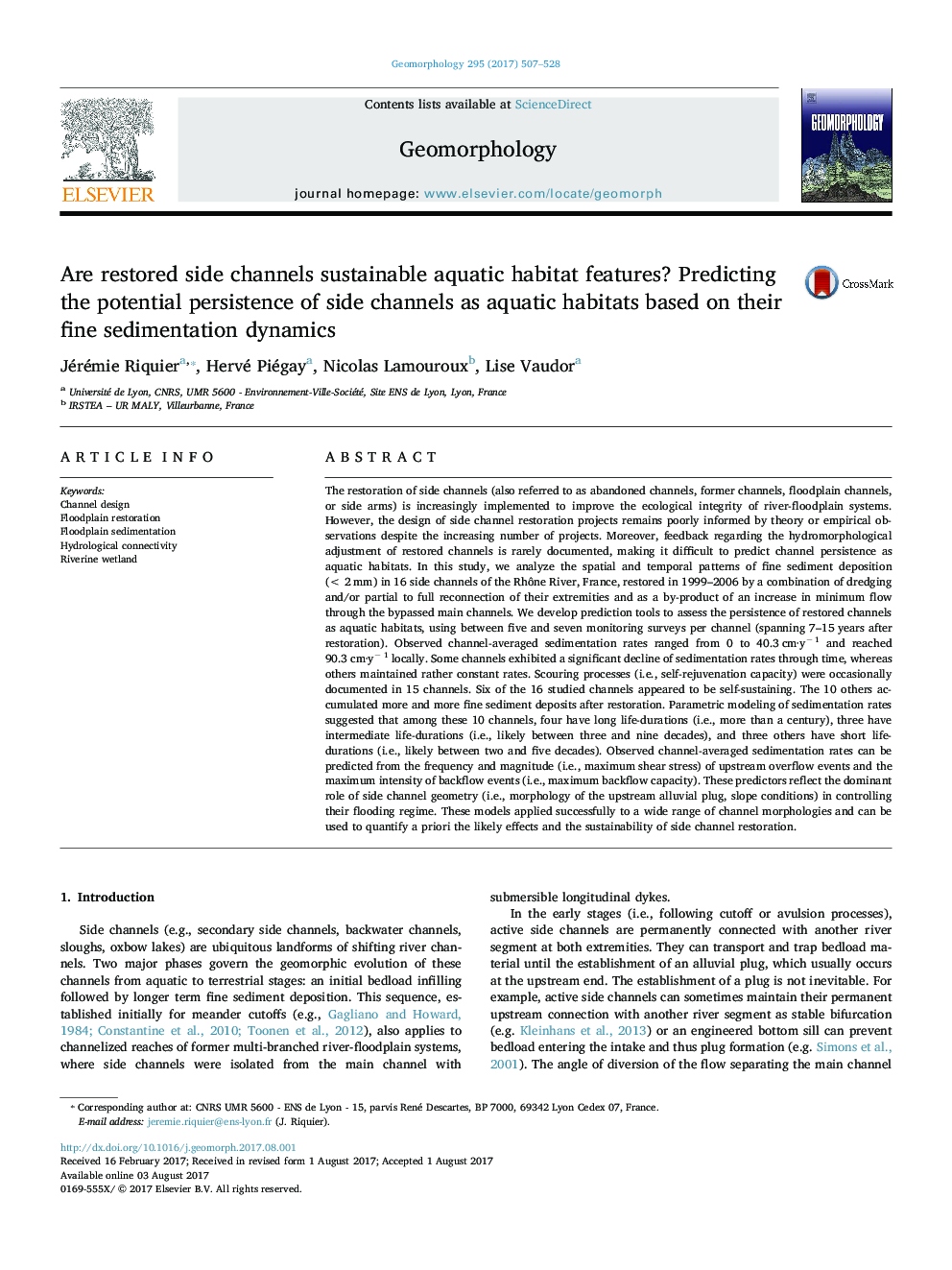| Article ID | Journal | Published Year | Pages | File Type |
|---|---|---|---|---|
| 5780772 | Geomorphology | 2017 | 22 Pages |
â¢We describe patterns and rates of fine sediment deposition in 16 restored side channels.â¢The persistence of side channels varies between 25 years and centuries.â¢Fine sediment deposition rates depend on simple hydrological and hydraulic descriptors.â¢Empirical statistical relationships can be of considerable benefit to management.â¢Long-term monitoring enables an assessment of restoration efficacy.
The restoration of side channels (also referred to as abandoned channels, former channels, floodplain channels, or side arms) is increasingly implemented to improve the ecological integrity of river-floodplain systems. However, the design of side channel restoration projects remains poorly informed by theory or empirical observations despite the increasing number of projects. Moreover, feedback regarding the hydromorphological adjustment of restored channels is rarely documented, making it difficult to predict channel persistence as aquatic habitats. In this study, we analyze the spatial and temporal patterns of fine sediment deposition (< 2 mm) in 16 side channels of the Rhône River, France, restored in 1999-2006 by a combination of dredging and/or partial to full reconnection of their extremities and as a by-product of an increase in minimum flow through the bypassed main channels. We develop prediction tools to assess the persistence of restored channels as aquatic habitats, using between five and seven monitoring surveys per channel (spanning 7-15 years after restoration). Observed channel-averaged sedimentation rates ranged from 0 to 40.3 cm·yâ 1 and reached 90.3 cm·yâ 1 locally. Some channels exhibited a significant decline of sedimentation rates through time, whereas others maintained rather constant rates. Scouring processes (i.e., self-rejuvenation capacity) were occasionally documented in 15 channels. Six of the 16 studied channels appeared to be self-sustaining. The 10 others accumulated more and more fine sediment deposits after restoration. Parametric modeling of sedimentation rates suggested that among these 10 channels, four have long life-durations (i.e., more than a century), three have intermediate life-durations (i.e., likely between three and nine decades), and three others have short life-durations (i.e., likely between two and five decades). Observed channel-averaged sedimentation rates can be predicted from the frequency and magnitude (i.e., maximum shear stress) of upstream overflow events and the maximum intensity of backflow events (i.e., maximum backflow capacity). These predictors reflect the dominant role of side channel geometry (i.e., morphology of the upstream alluvial plug, slope conditions) in controlling their flooding regime. These models applied successfully to a wide range of channel morphologies and can be used to quantify a priori the likely effects and the sustainability of side channel restoration.
